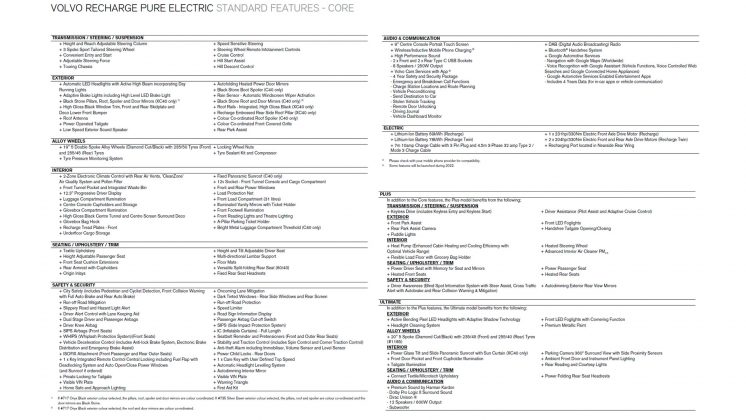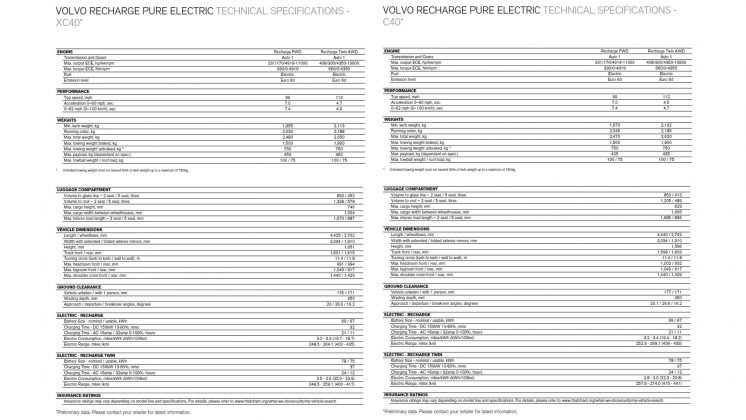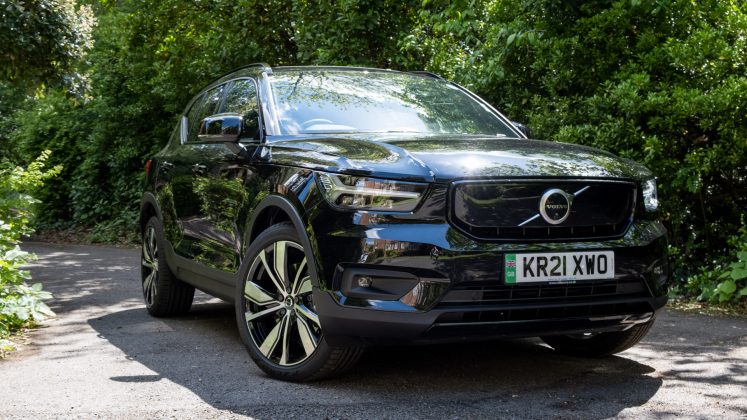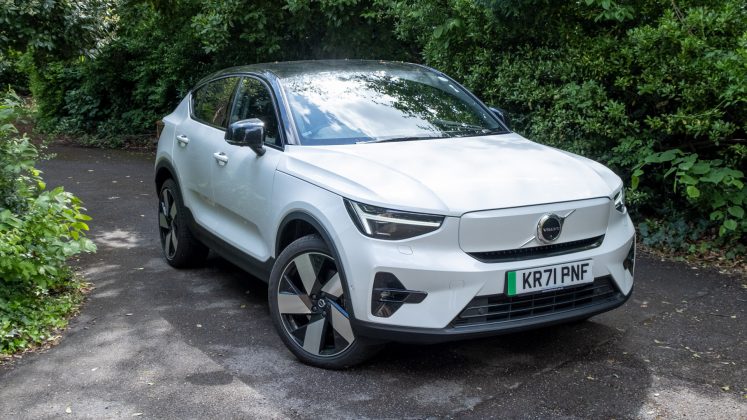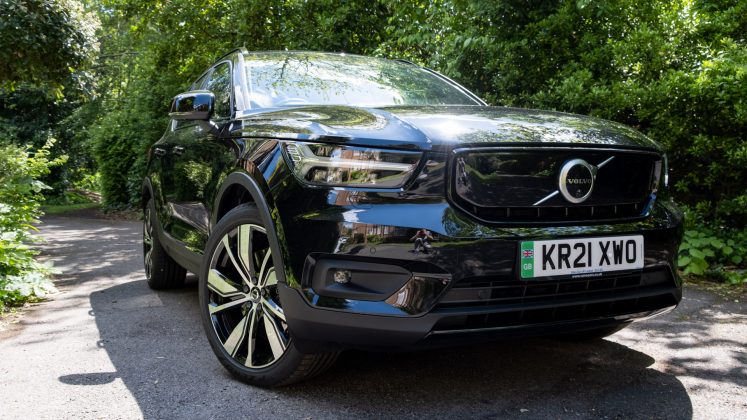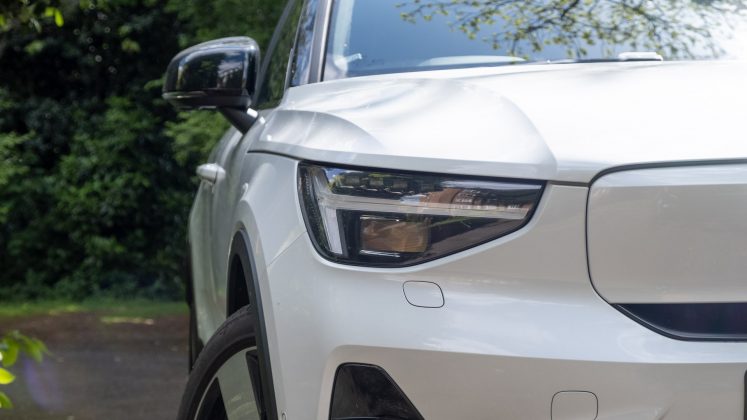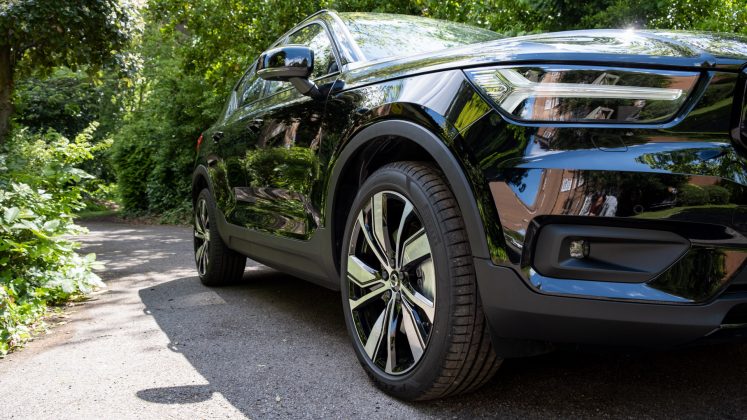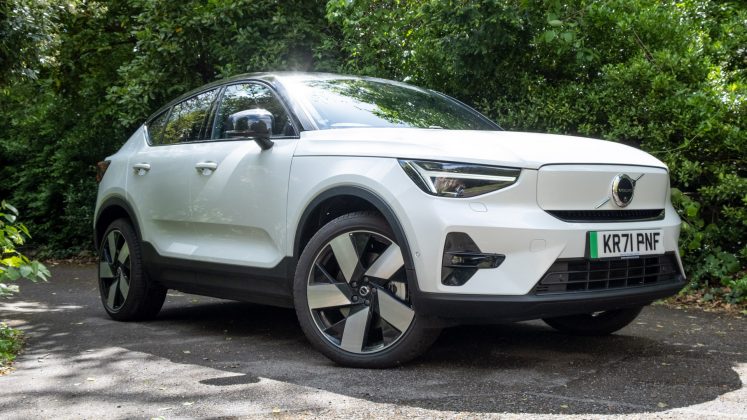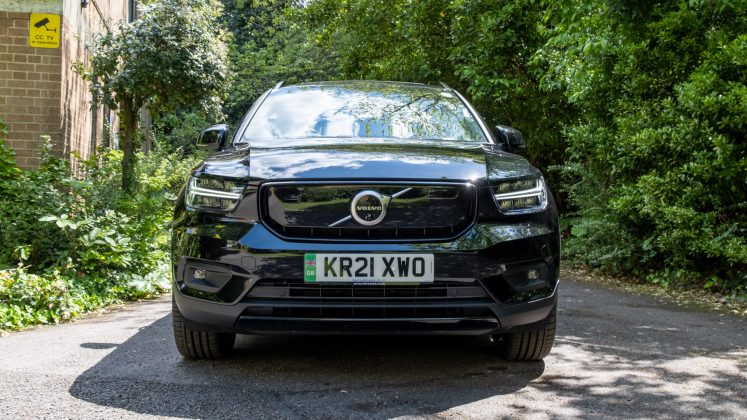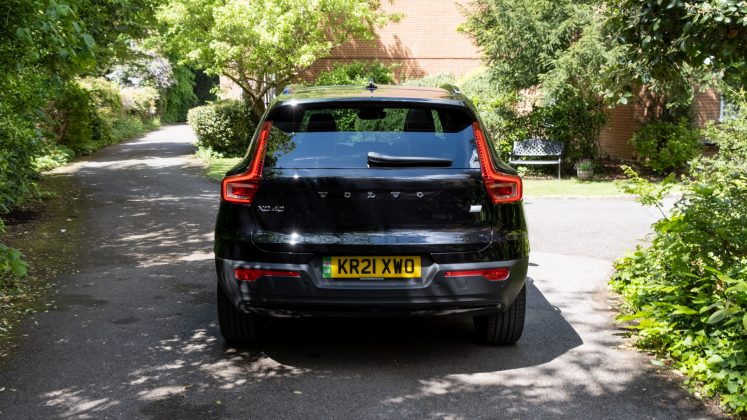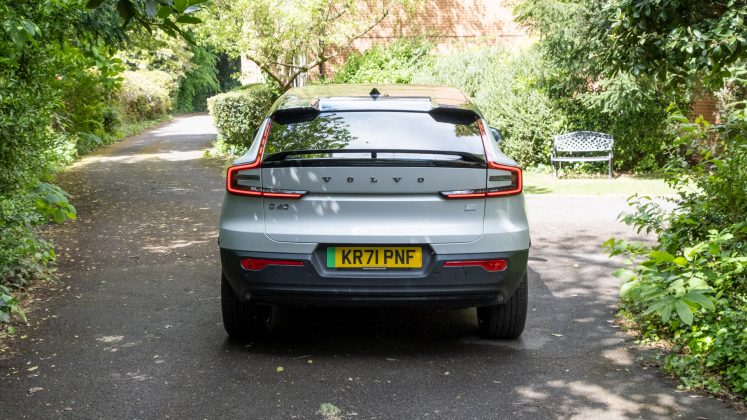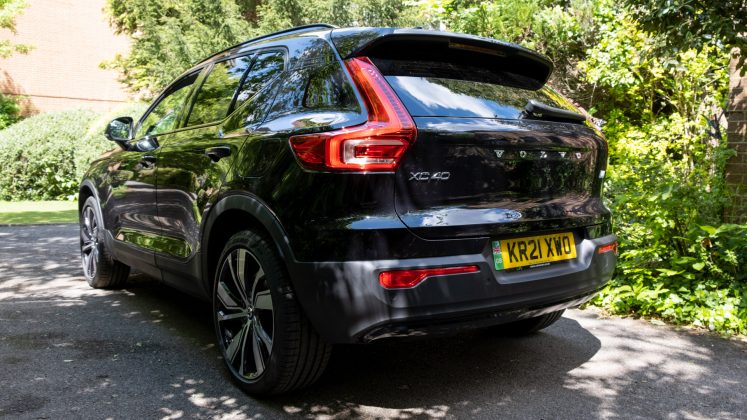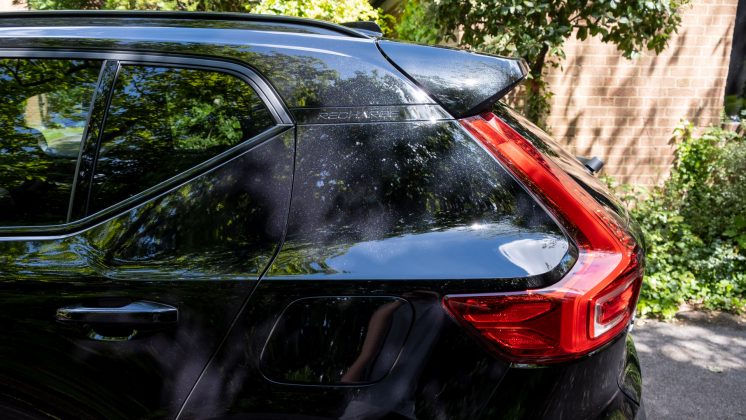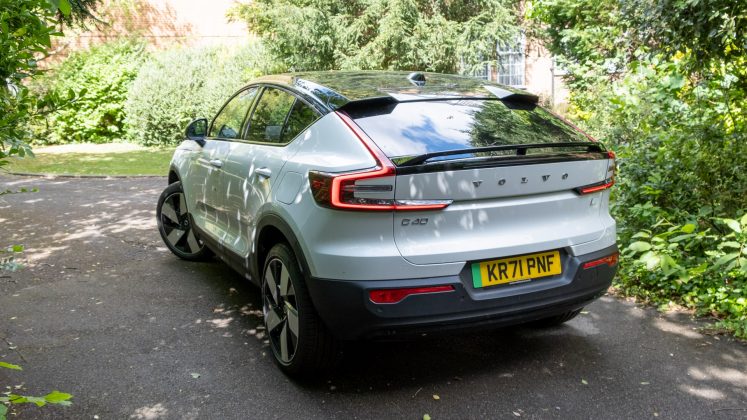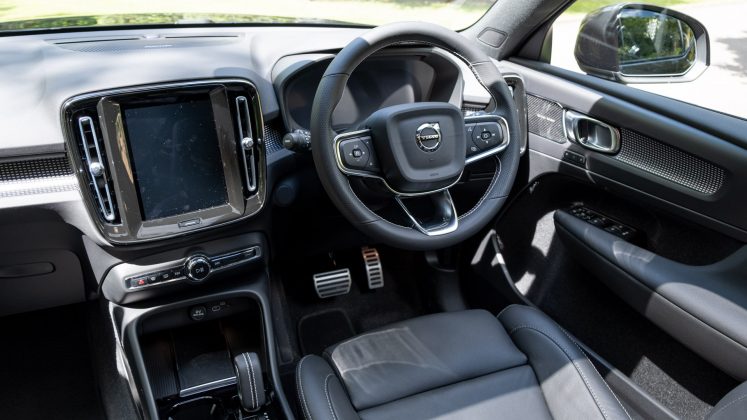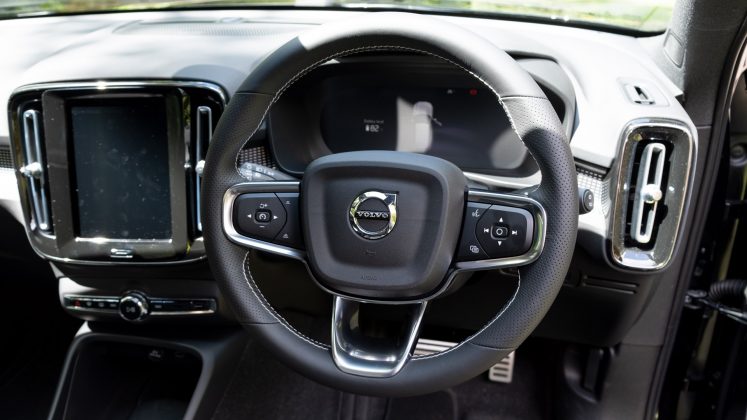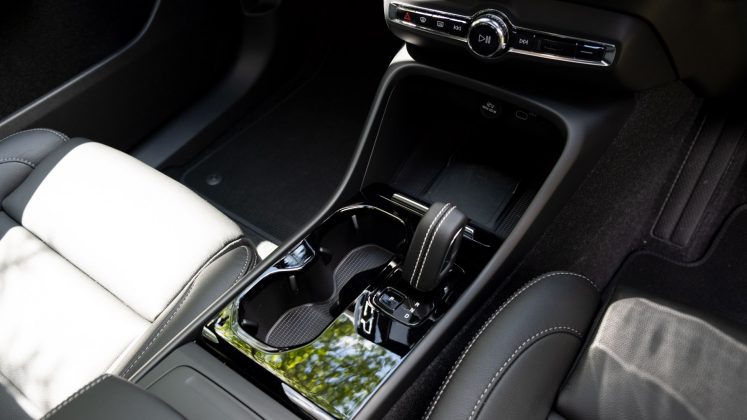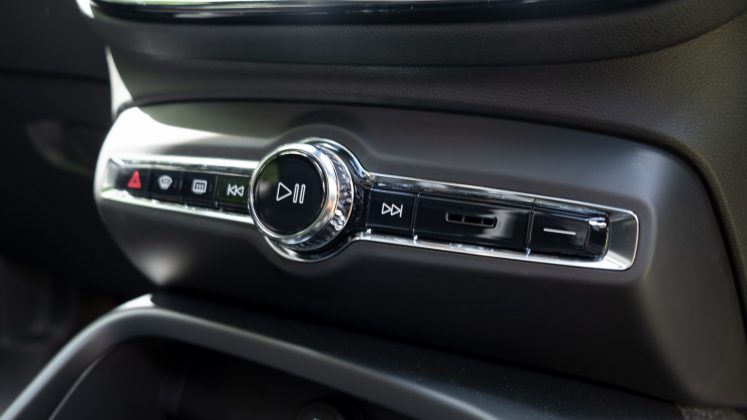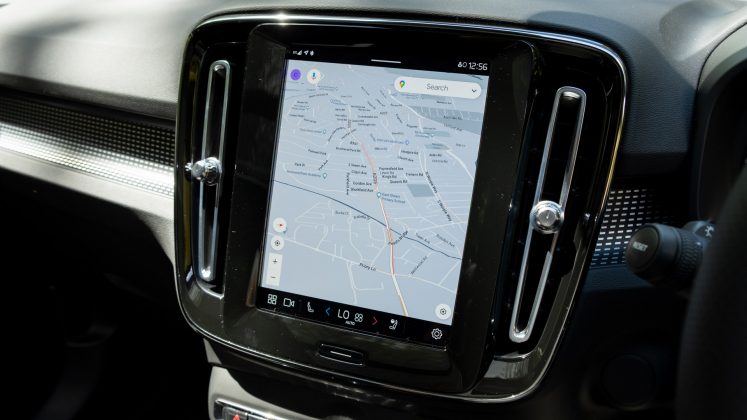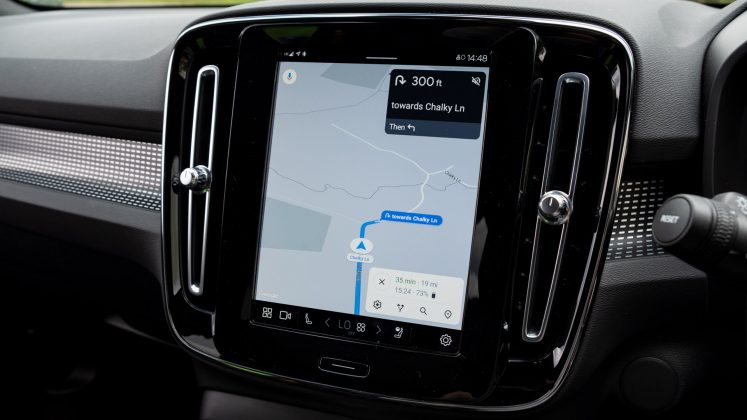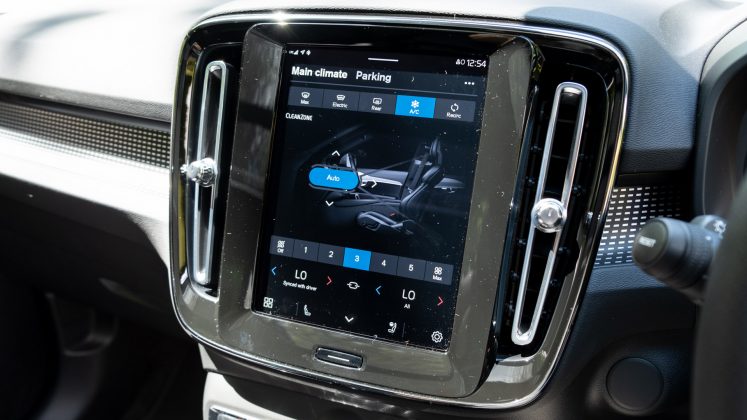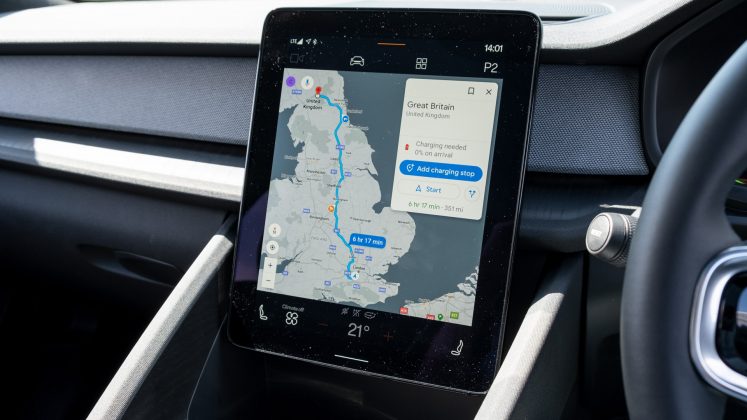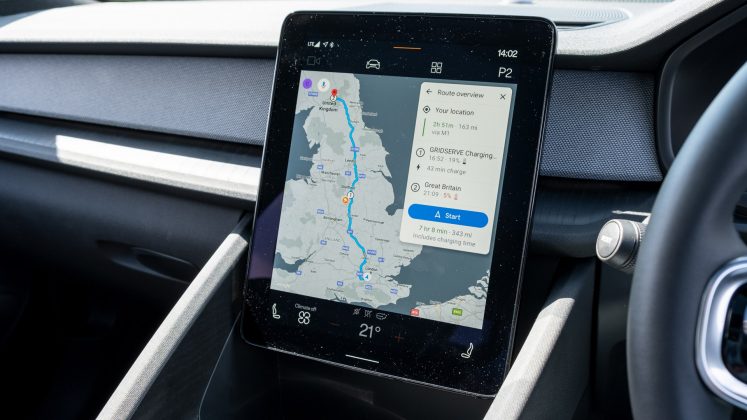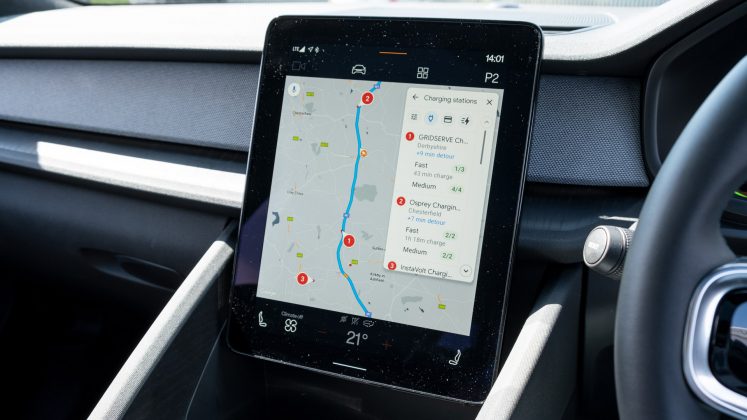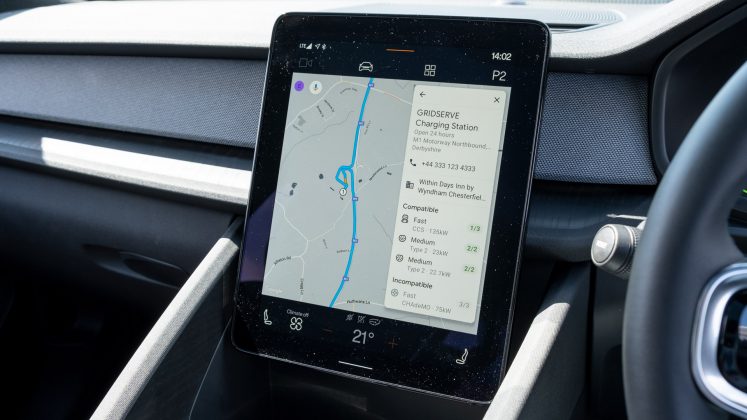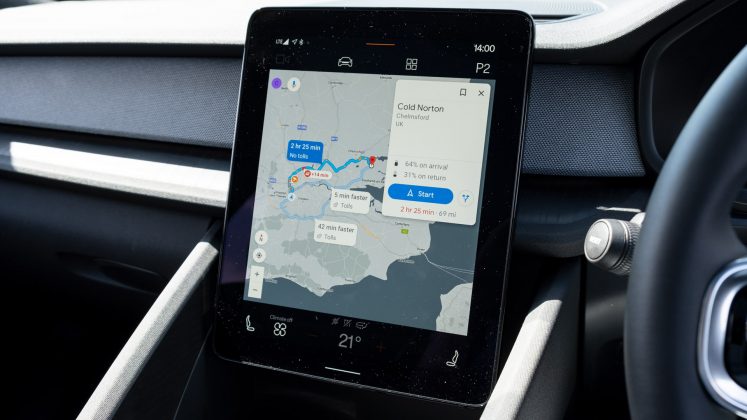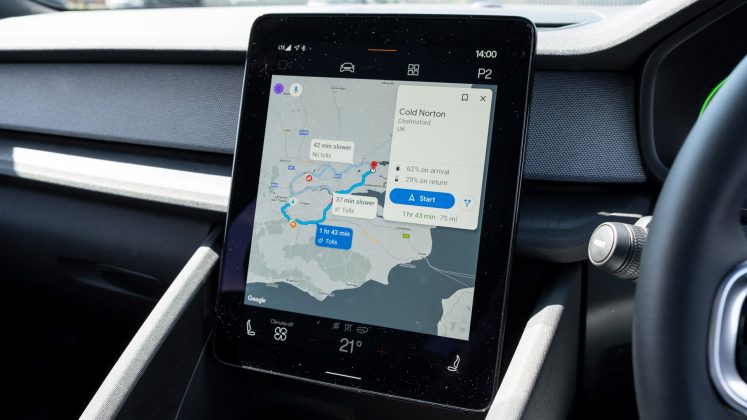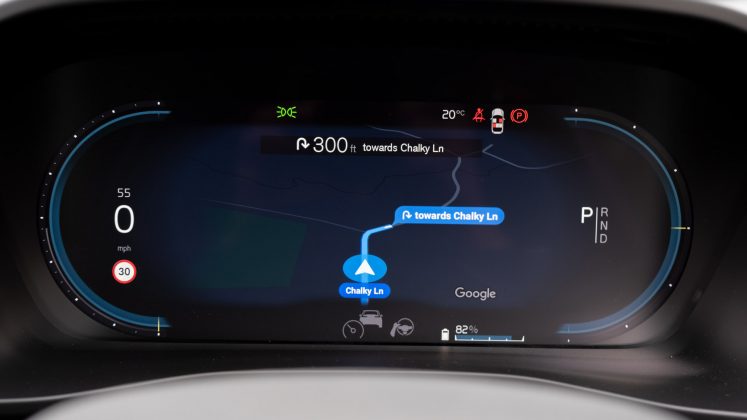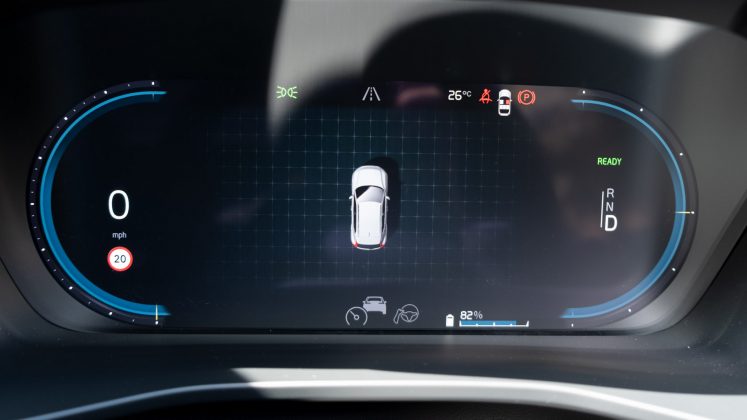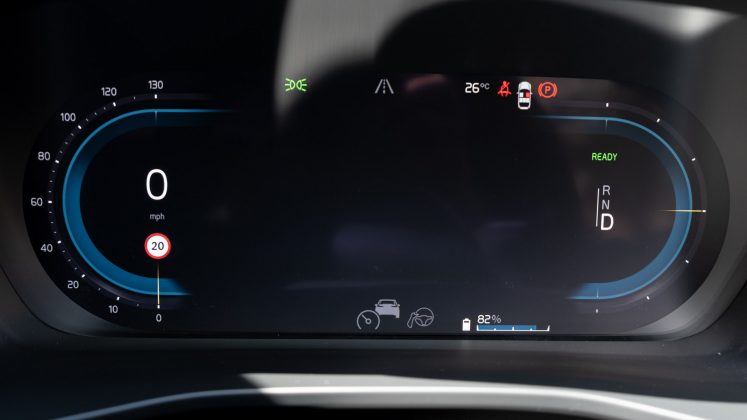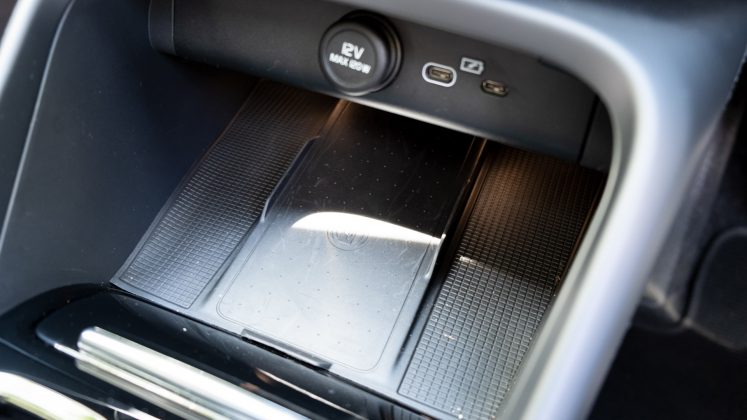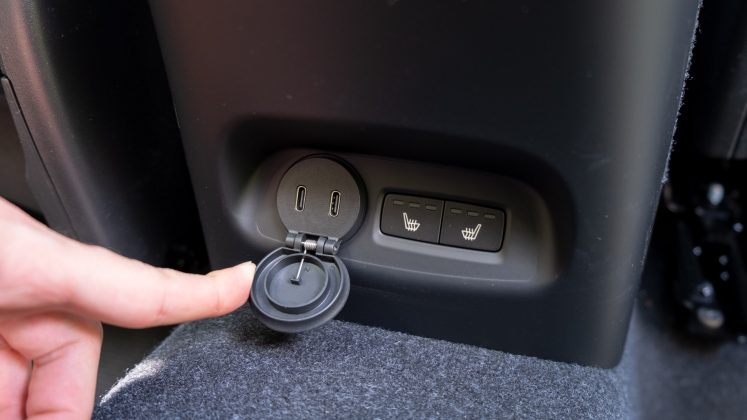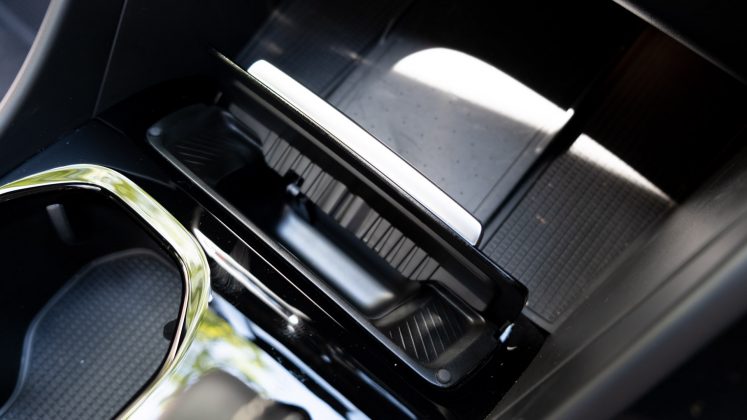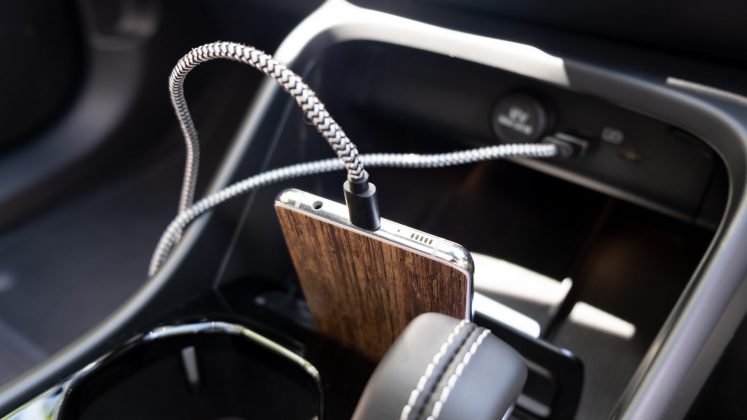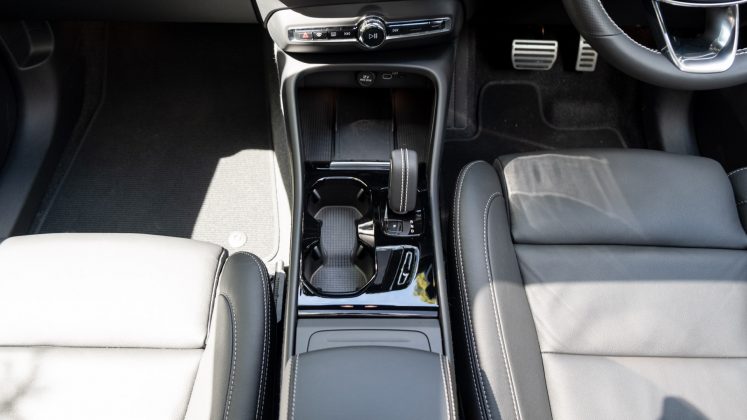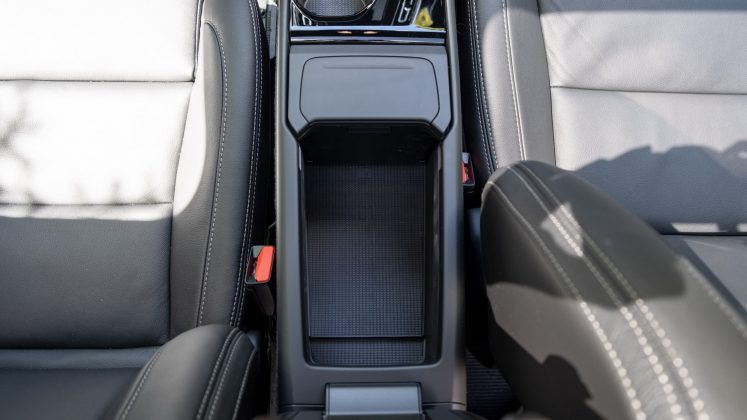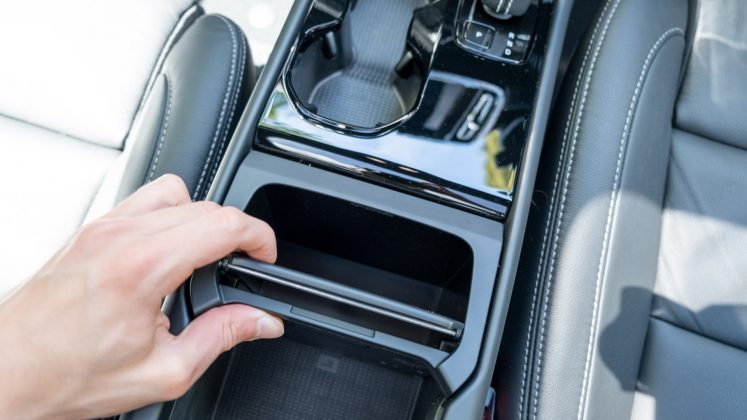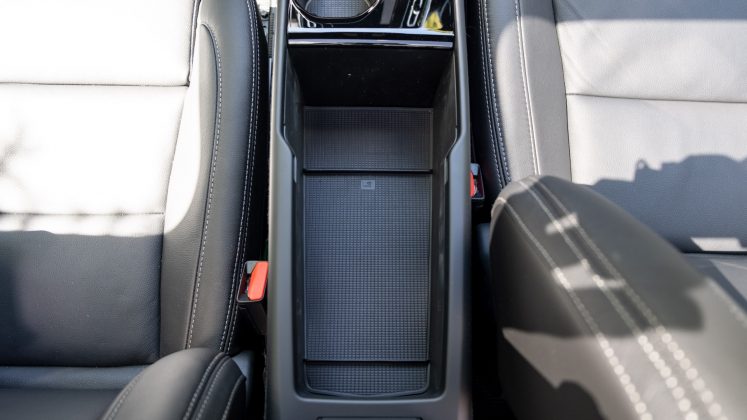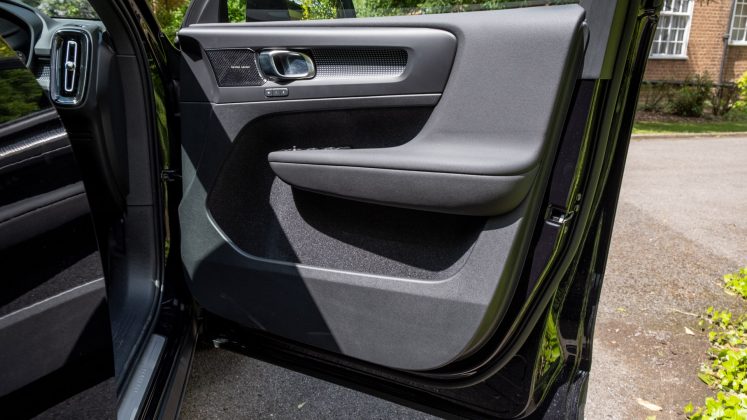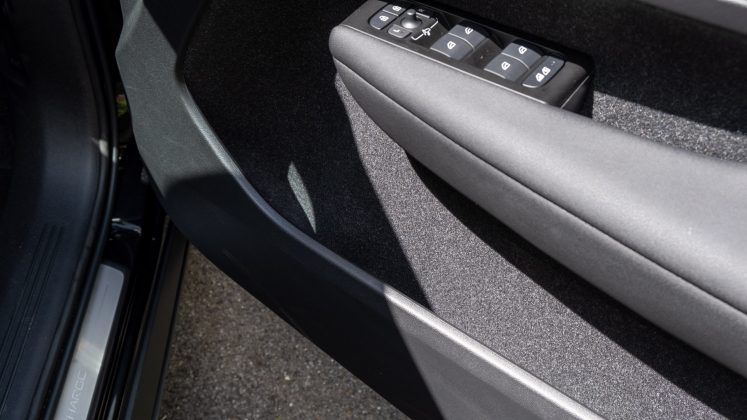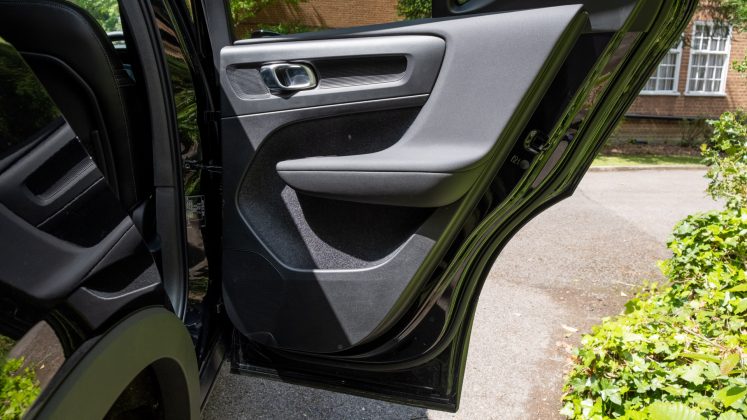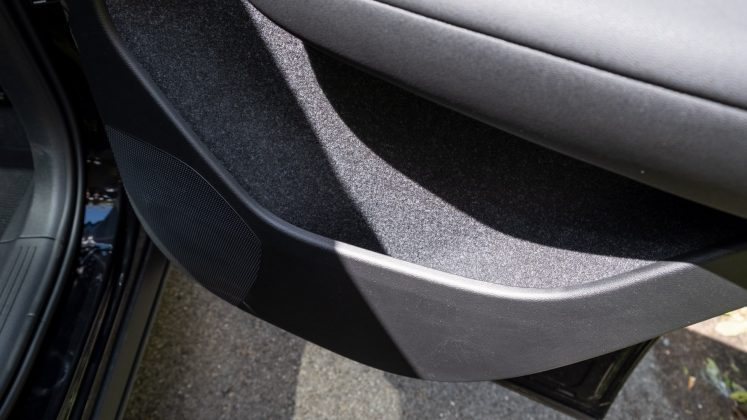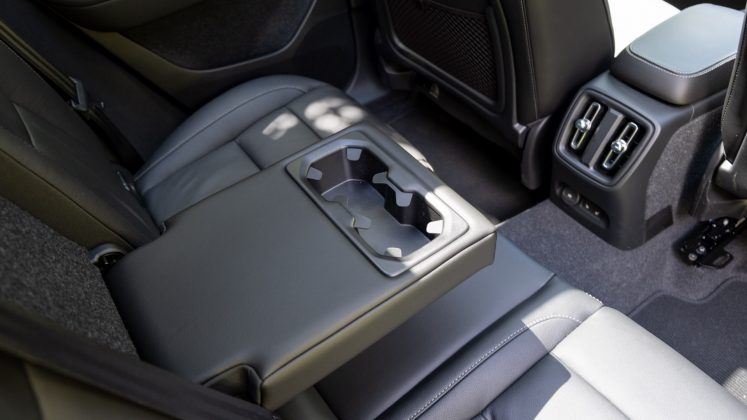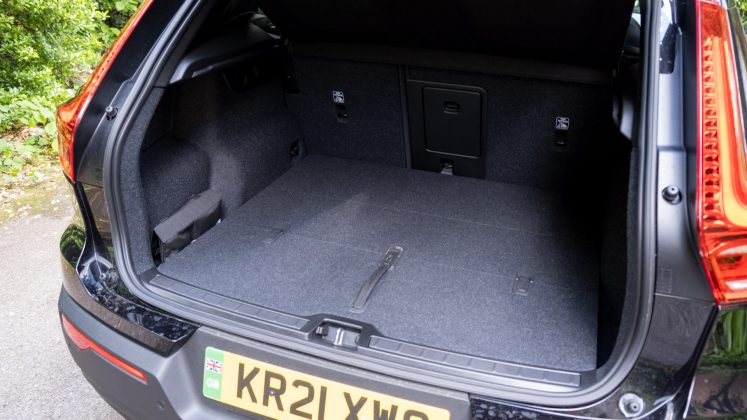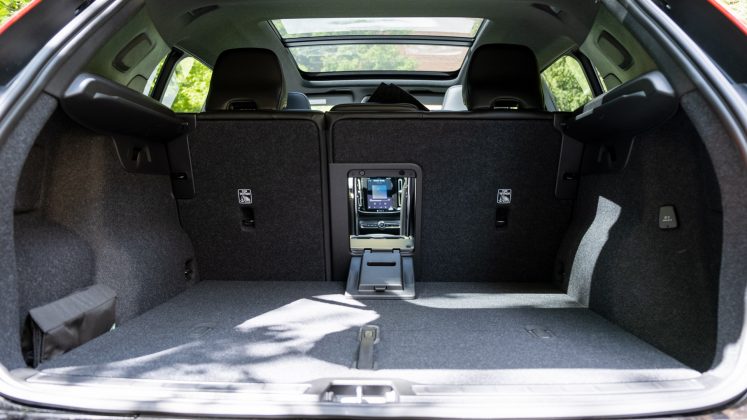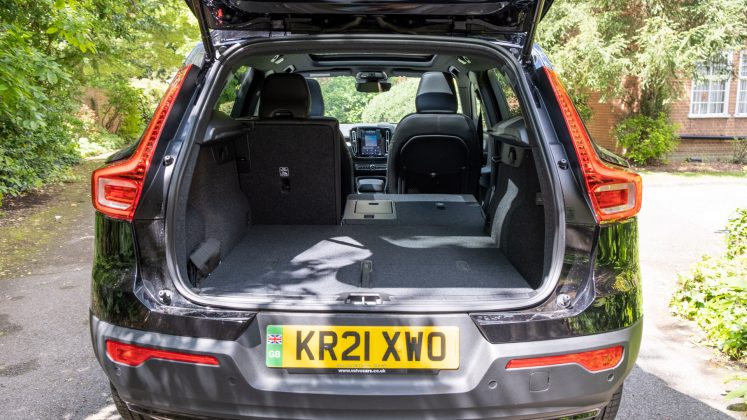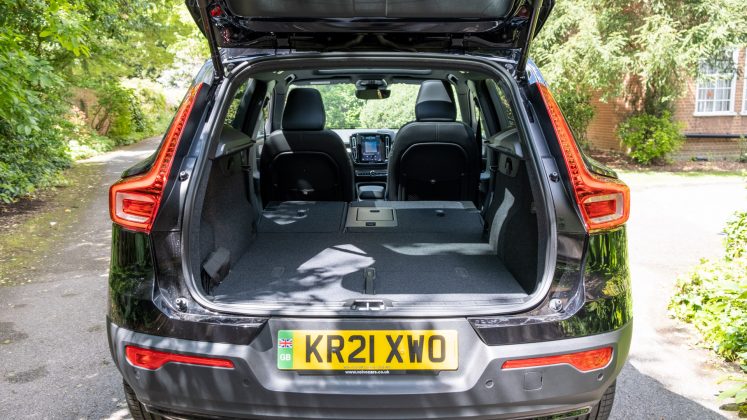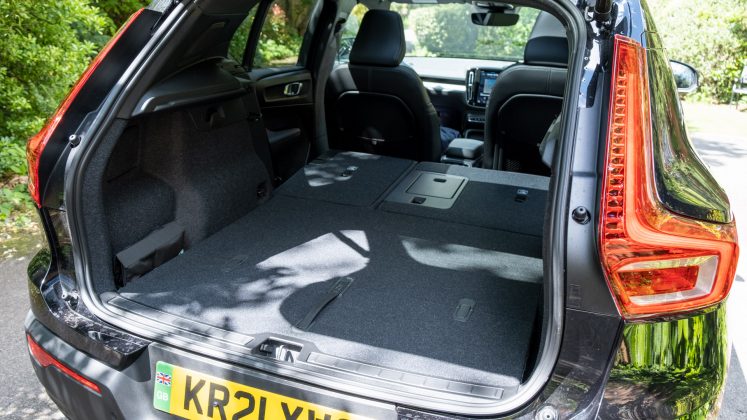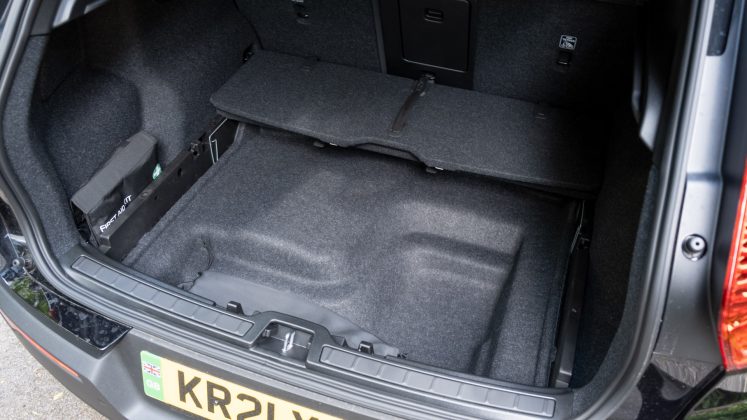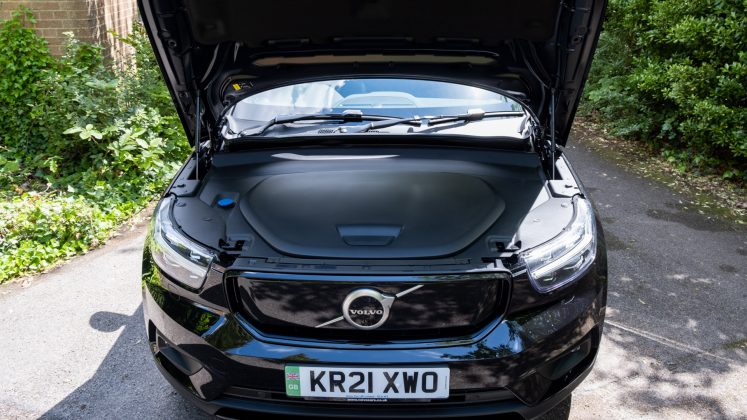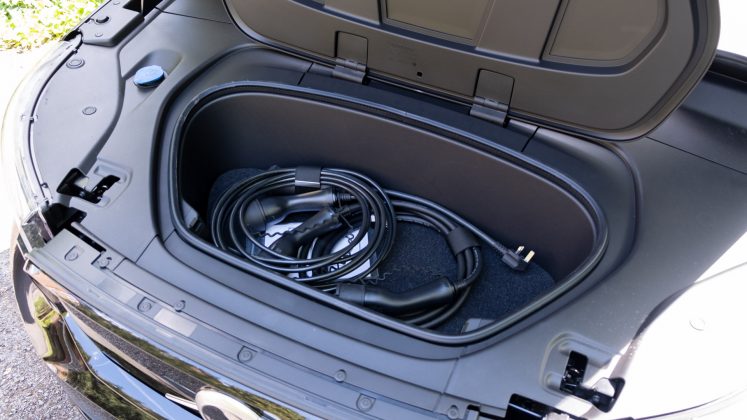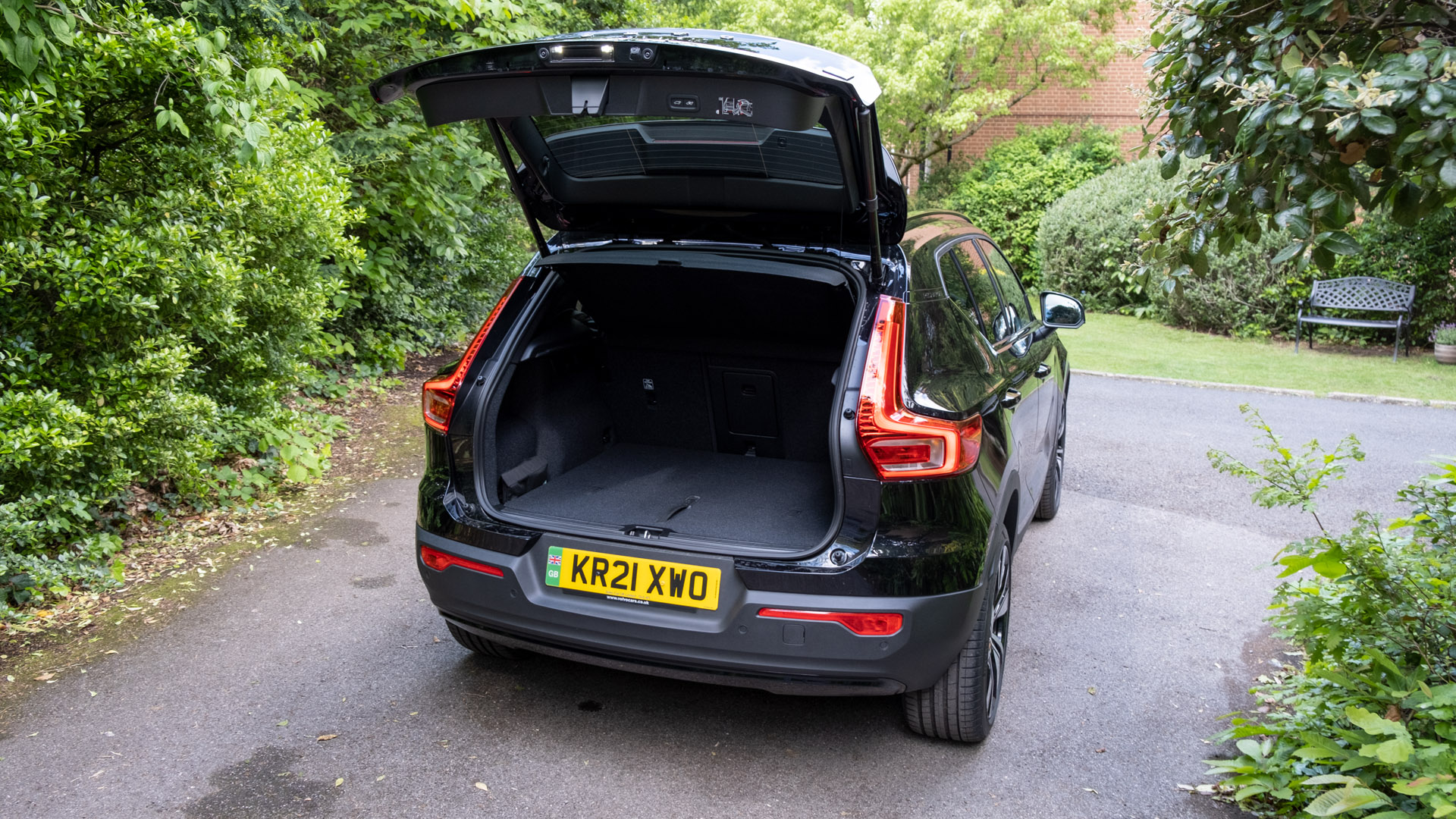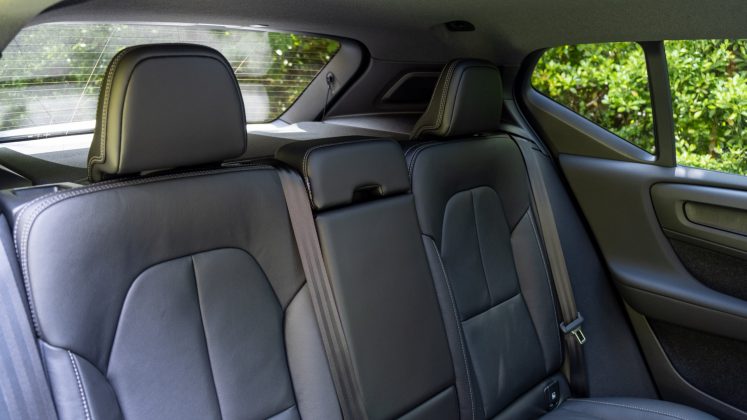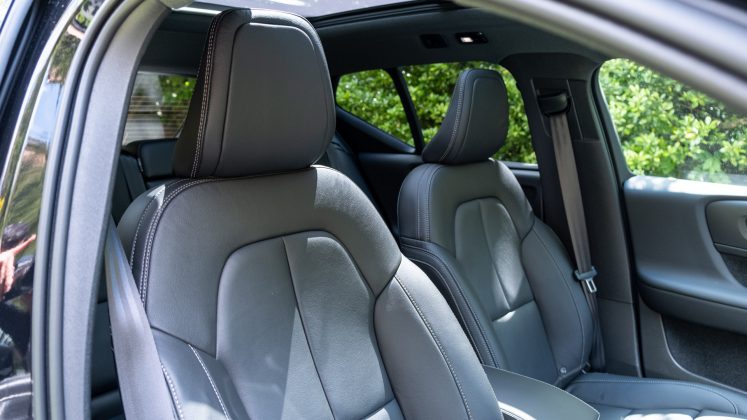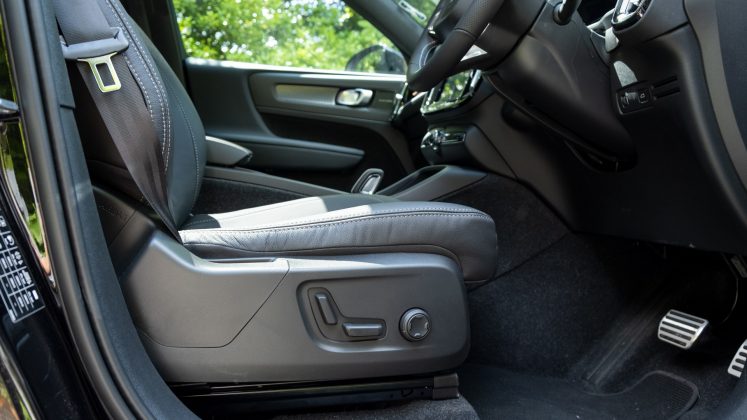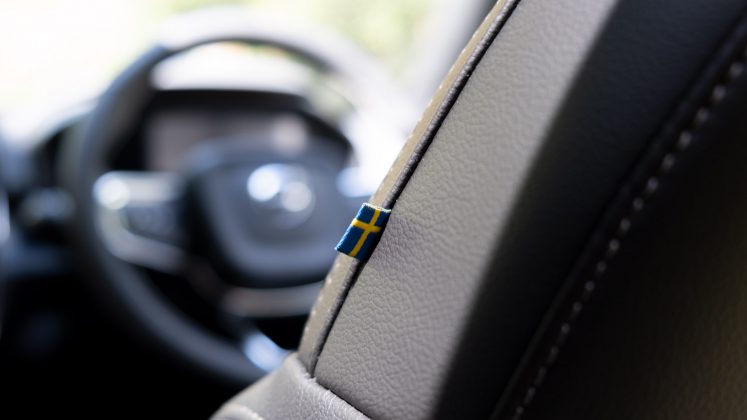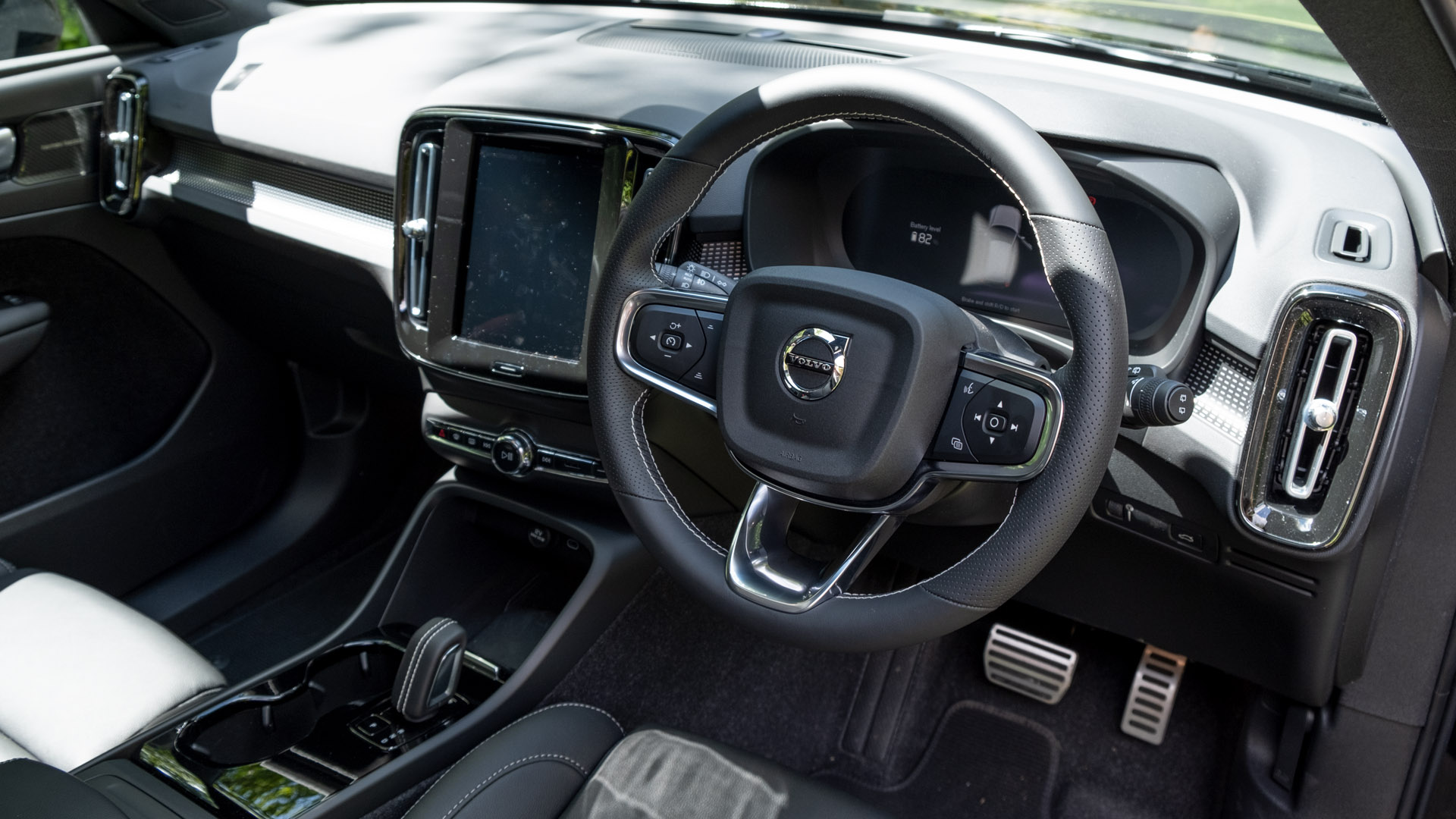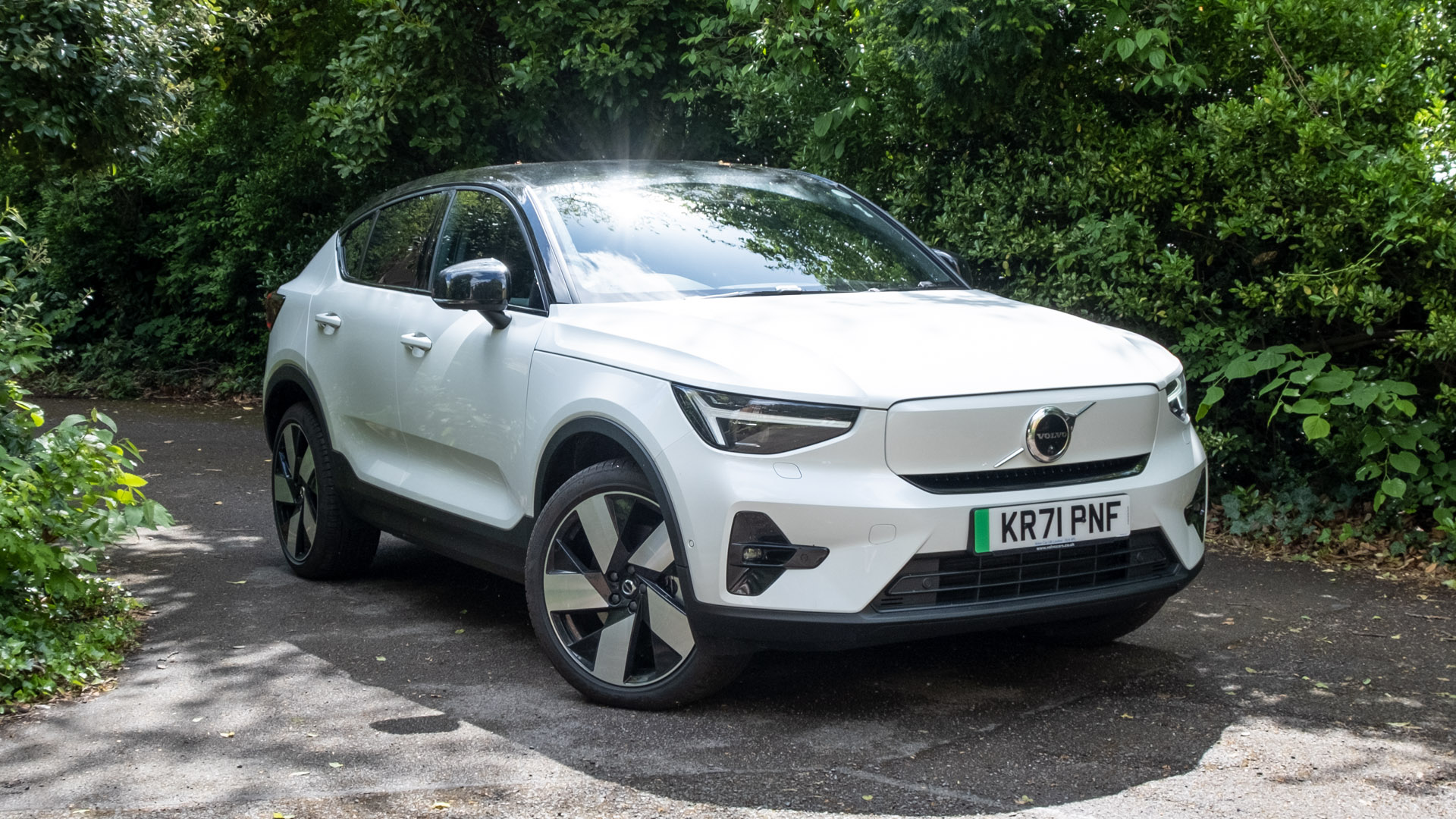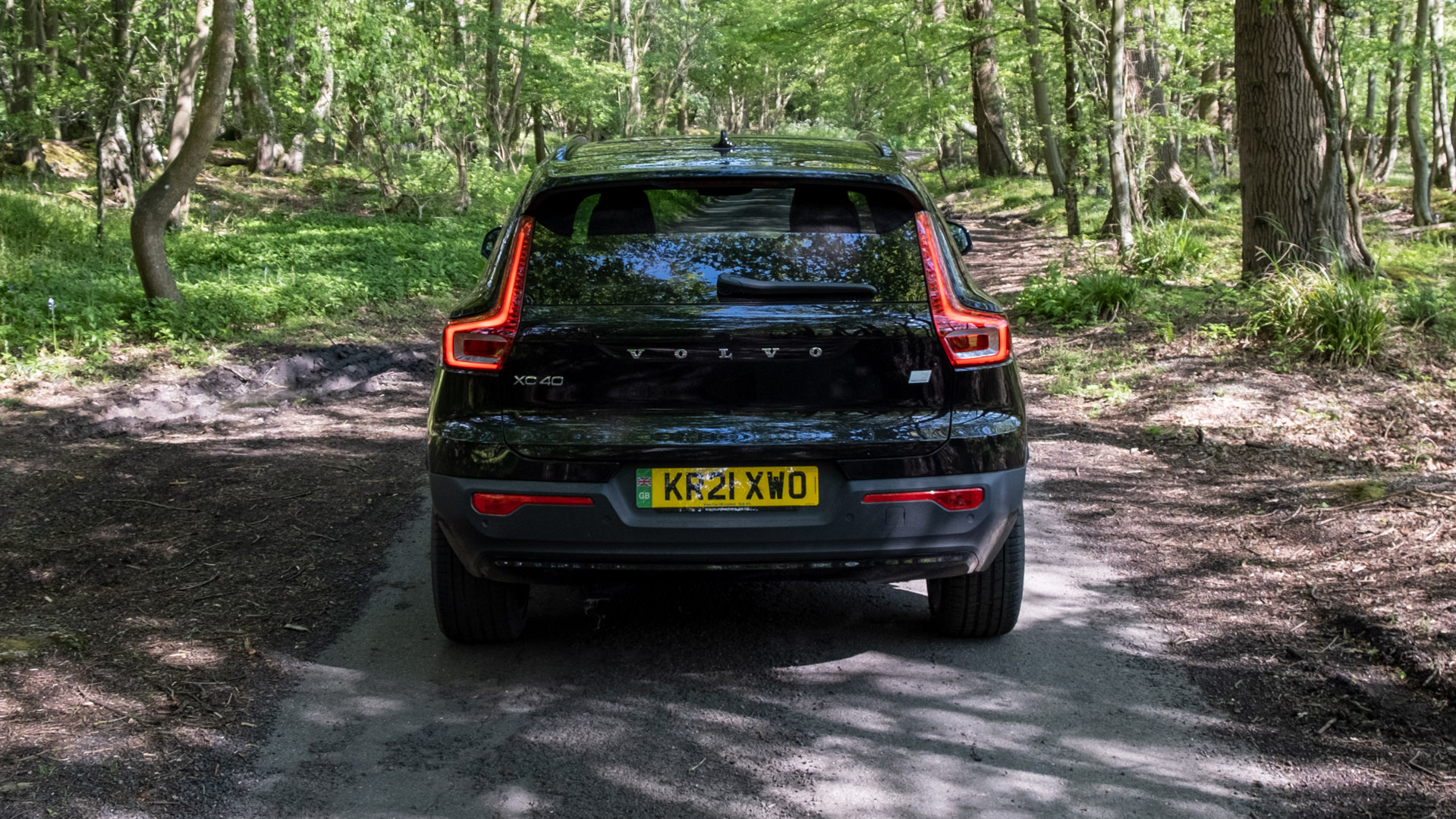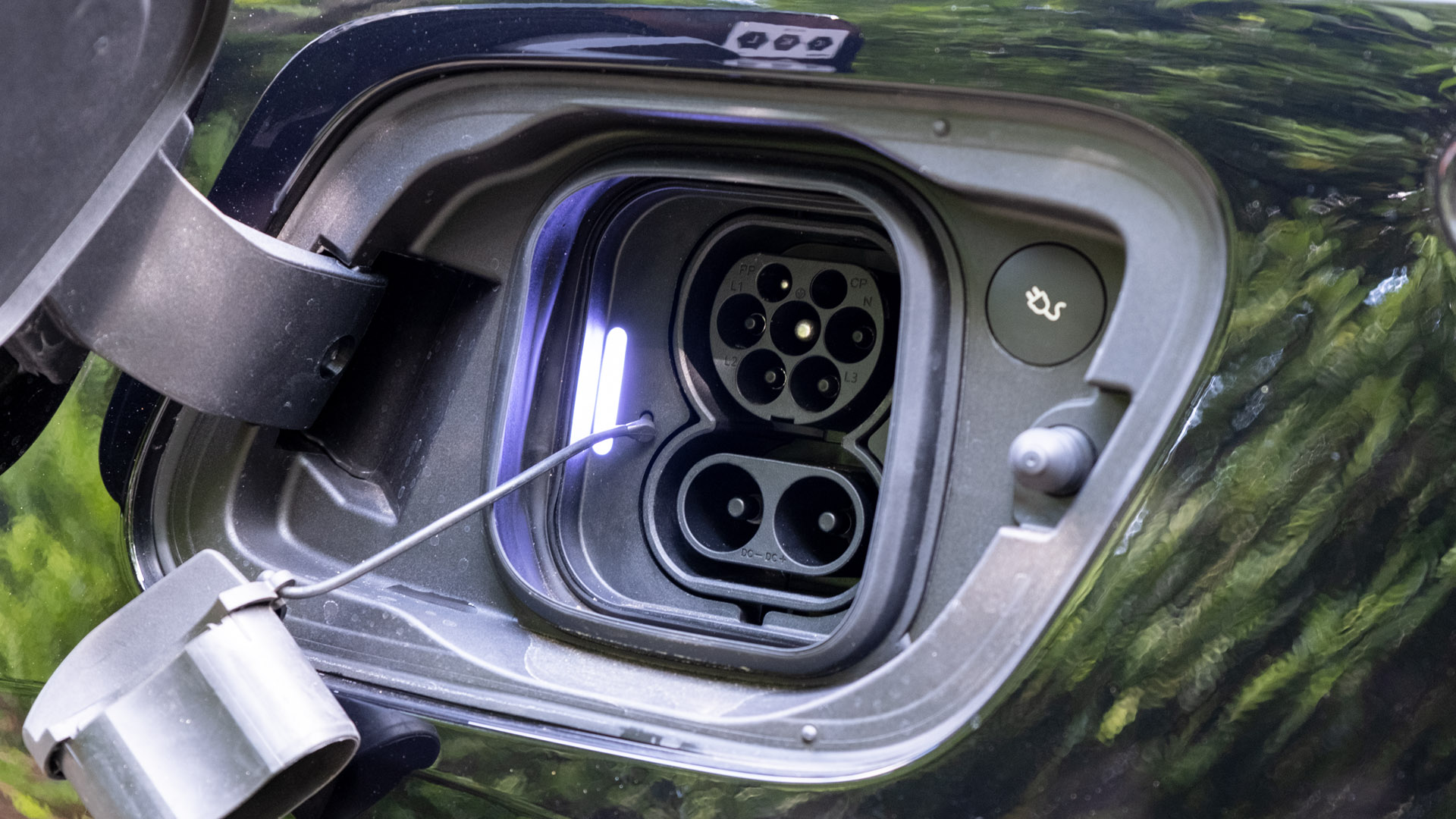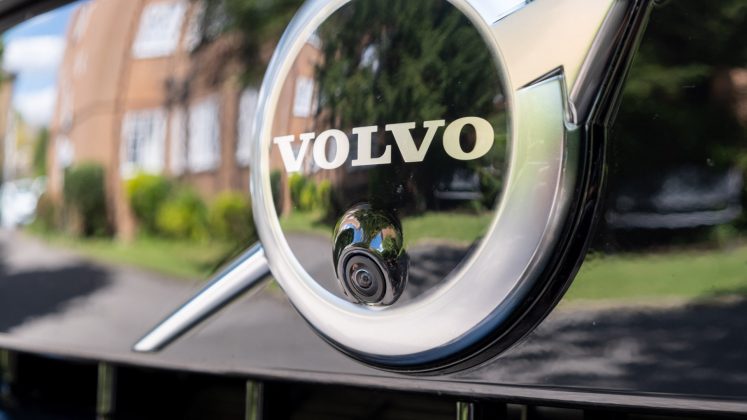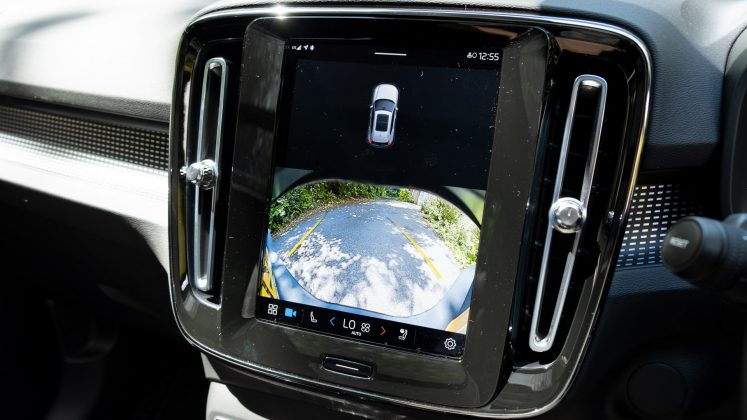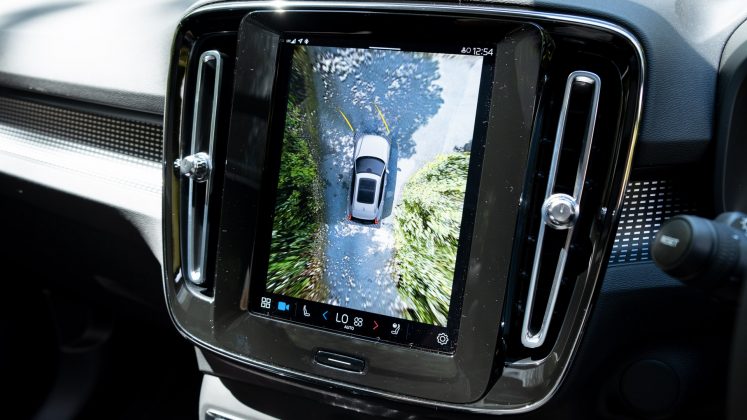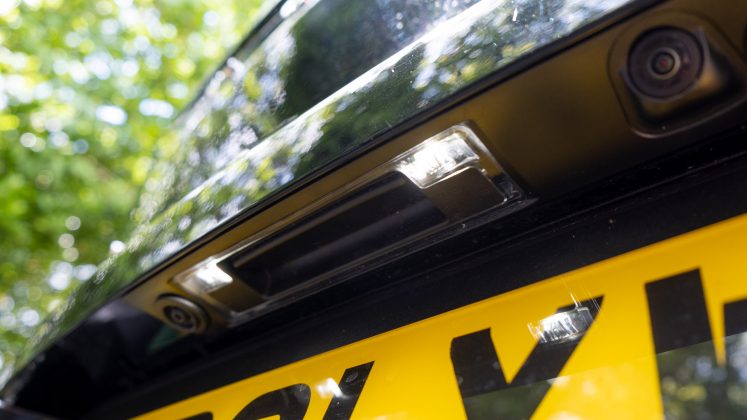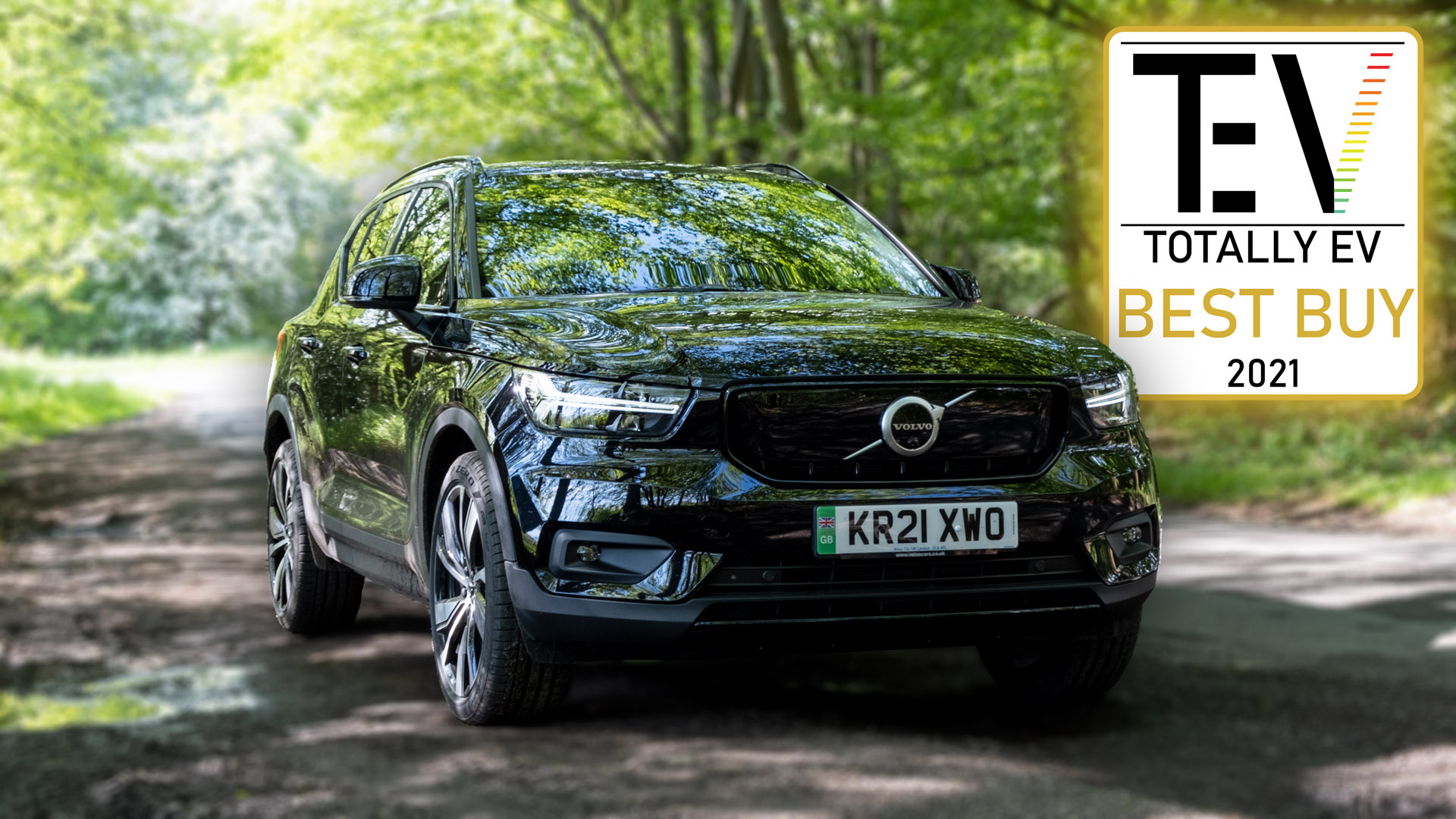The Volvo XC40 has been around since 2017 and is the manufacturer’s popular compact SUV. In 2019, the now Chinese-owned automaker revealed its latest foray in electrification when it announced the XC40 Recharge, a fully electric vehicle.
In 2021, the manufacturer revealed the C40, a pure electric crossover, which shares many similarities with its sibling, the XC40 Recharge. Having tested both extensively, we’ll be looking to see which model is best and how they compare to rival offerings.
If you’d prefer to watch our comparison of the XC40 and C40, head on over to our YouTube channel. We’ve also got a dedicated review for the XC40 Recharge Twin.
Volvo XC40/C40 Recharge price & competition
When we reviewed the XC40 Recharge in 2021, there was only a dual-motor configuration and three trim levels: Twin (£49,950), Twin Plus (£52,950) and Twin Pro (£56,700). Quite a lot has changed since then, including the introduction of the C40 and the pricing.
Indeed, the XC40 Recharge is now available in a single and dual-motor configuration. The former is available in three trims levels: Core (£44,900), Plus (£50,900) and Ultimate (£54,200). The twin-motor setup is available in two trims: Plus (£56,150) and Ultimate (£59,450).
Find the best Volvo XC40 Recharge deals
The C40 is identical in its model lineup but is slightly more expensive – single motor: Core (£46,250), Plus (£52,250) and Ultimate (£55,850), and dual-motor: Plus (£57,500) and Ultimate (£61,100).
Standard equipment in the XC40 and C40 are extremely similar – a detailed breakdown is below (click to expand):
It’s important to consider, however, that the Plus and Ultimate trims have a Heat Pump installed, which is quite important if you live in a country that has a cooler climate. This cannot be added onto the Core trim and is therefore included as standard in all of Volvo’s dual-motor EVs.
As for competition, there are numerous all-electric SUVs to consider: the MG ZS EV from £27,745; while the Kia Soul EV and Niro EV ‘2 64’, the Skoda Enyaq iV 60 and Volkswagen ID.4 all start from £34,995. You’ve also got the MG5 EV, an all-electric estate that starts from £28,195.
In the more premium category you’ve got the Hyundai Ioniq 5 from £36,995; the Kia EV6 from £40,945; the Ford Mustang Mach-E from £42,530; the Mercedes EQA 250 from £44,495; the Audi Q4 40 e-tron at £46,065; the BMW iX3 from £60,970; the larger Audi e-tron at £62,560; the Jaguar I-Pace at £65,620; the Mercedes EQC at £65,720; and the Tesla Model X at £102,980.
Elsewhere, you’ve got Volvo’s offspring, the Polestar 2, an all-electric saloon, which starts from £41,900.
Read next: Polestar 2 review: Tesla Model 3 and BMW i4 beater?
Volvo XC40/C40 Recharge exterior review
From the exterior, both Volvos look the part, the C40 being the slightly less boxy and almost more sporty out of the two. In comparison to other all-electric SUVs on the market, we find both offer a luxurious design – at the front, the accentuated bonnet and T-shaped headlights give them a slightly aggressive look on the road, while the front grille is covered by a plastic panel to improve on aerodynamic efficiency.
As for its side profile, the 19″ or 20″ alloys (dependent on the trim level) give the SUVs a more sporty stance. Plastic inserts around the wheel arches and side skirts don’t detract from the overall design either, as these don’t protrude too much from the vehicle’s shell. The integrated spoiler, namely on the C40 model, also give a little extra pizzazz.
Read next: New MG ZS EV review: Still the best budget electric SUV?
Volvo XC40/C40 Recharge interior review
Likewise, the interior design of both Volvo vehicles is stunning – Volvo’s choice of premium materials, use of physical buttons and appropriately-sized displays make for an intuitive experience. Both the XC40 and C40 Recharge don’t share the same minimalist design as the Tesla Model Y, nor do they omit all physical buttons like the Volkswagen ID.4.
Indeed, there are still a few physical buttons and knobs intact; media controls and a physical volume knob are planted by the centre console. Here, you’ll also find the hazard, max defroster and heated rear window buttons. A flurry of physical buttons also sit on the steering wheel, where the ones on the right are media controls and the ones to the left alter the vehicle’s cruise control settings. The two stalks behind the steering wheel also make it easy to interact with the vehicle – you don’t have to resort to tapping virtual buttons on the infotainment system to adjust the wipers; a complaint we had of the Tesla Model 3 and Model Y.
Onto the centre 9″ portrait display, it’s easy to navigate with all the vehicle’s settings accessible via a touch of a button. Through the infotainment system, you’ll also be able to adjust the vehicle’s climate controls, which are readily available as they’re permanently planted along the bottom segment of the display.
The real differentiator between other EVs is that Volvo, much like its sister company, Polestar, uses Android Automotive. The operating system natively supports Google Maps, which in turn offers fantastic route planning and there’s even a stripped-down version of the Play Store so that you can download apps.
Route planning in EVs is particularly important, as it helps alleviate range anxiety; almost all of its rivals have their own proprietary navigation systems, which don’t always read the vehicle’s battery level making it tricker to accurately plan a journey. Thankfully that’s not the case in both Volvo and Polestar’s EVs that use Android Automotive.
Not only does Google’s system correctly read the remaining battery level but it also cleverly suggests adding a charging stop to your journey if you’re set to arrive on an empty charge. It’s a feature we’d love to see integrated into all EVs – of course, Tesla has this in all of its vehicles but it’s still refreshing to see another manufacturer adopt an intuitive user experience – below, you’ll see a few examples of how this works on the Polestar 2:
Better still, navigation data also shows up on the 12.3″ fully digitalized instrument cluster, which means you’ll have a detailed view of where you’re going and means you don’t have to glance towards the centre of the dashboard to check your whereabouts. However, it’s a shame that a Head-Up Display (HUD) doesn’t come as standard nor is it available as an option; this would have further bolstered the driver’s view.
Volvo’s integration of Google’s services doesn’t stop there, as Google Assistant is baked into the vehicle’s infotainment system; it allows you to search the web with your voice to get tailored results, and even goes a step further by allowing you to adjust a few of the vehicle’s settings: “Hey Google, turn up the fan speed by one”; “Hey Google, play the radio”; “Hey Google, lower the volume”. The voice commands work flawlessly and will pick up most accents and languages, too.
On the subject of technology, you can wirelessly charge a smartphone via the non-slip pad found by the centre console. One can also use the USB Type-C port to charge a smartphone. It is, however, surprising to see that both Android Auto and Apple CarPlay are not supported – at least, not at the time of writing. As such, you’re limited to using Bluetooth to playback your favourite songs, where only the lower-quality SBC and AAC codecs are supported; a USB connection would have further heightened the listening experience due to it not losing detail over a wireless connection.
Despite limitations, the XC40 and C40 Recharge’s audio systems are still vastly impressive: in the Core and Plus trims, you’ll get an eight-speaker system that outputs 250 Watts. If you want a subwoofer, you’ll want to get the Ultimate trim as it comes with an excellent 13-speaker Harman Kardon system that outputs a whopping 600 Watts of power. If you’d like to hear how the latter system performs, head on over to our YouTube channel for the review. Note, there’s no means of upgrading either the Core or Plus trims to include the Harman Kardon system.
Volvo XC40/C40 Recharge storage review
Should a phone be plugged in, you’ll find a handy storage compartment at the front of the centre console which allows you to vertically wedge a device into it. There are two small bays next to the wireless charging pad, which also allow you to store a few valuables.
Here, you’ll also find a secondary Type-C port and a 12V socket, should you wish to plug in a dash cam or charge another device. A further two Type-C charging ports are located at the rear of the cabin.
As for the centre console, it houses a sleek gear selector, two cupholders and an armrest. Here, a large-sized purse or wallet can fit in this compartment, and the ability to remove the plastic storage box allows for greater flexibility when transporting slightly elongated valuables. Of course, the glove box is there to be used too.
The front door bins are pretty large, where they’ll fit a 500ml bottle with ease; the compartments are lined in fabric, which prevents keys or loose change from rattling when you’re on the road. At the rear, the door bins are a little more limited, but there are some handy storage bays beside each of the rear seats. Drop down the rear middle seat and you’ll also find two cupholders. Should the fifth seat be vacant, you can also open up the vehicle’s ski latch, allowing you to transport elongated goods without having to sacrifice rear occupant comfort.
Speaking of the boot, the XC40 Recharge offers 452 litres of space including the underfloor compartment and with the seats down, this figure extends up to 1,328 litres. By comparison, the C40 offers 413 and 1,205 litres, respectively.
We think both will suffice for most consumers, but there are other all-electric SUVs that offer greater capacity – here’s how Volvo’s vehicles stack up: Tesla Model Y (854/2,100 litres); Audi e-tron (660/1,725 litres); Skoda Enyaq iV (585/1,710 litres); VW ID.4 (543/1,575 litres); Hyundai Ioniq 5 (520/1,587 litres); BMW iX3 (520/1,560 litres); Jaguar I-Pace (656/1,453 litres); Audi Q4 e-tron (520/1,490 litres); MG5 EV estate (464/1,456 litres); Kia e-Niro (451/1,405 litres); Peugeot e-2008 (434/1,467 litres); MG ZS EV (448/1,375 litres); Kia EV6 (490/1,300 litres); Ford Mustang Mach-E (402/1,420 litres); Kia Soul EV (315/1,339 litres); Mercedes EQA (340/1,320 litres); Citroen e-C4 (380/1,250 litres). An honourable mention to its saloon sibling, the Polestar 2, which offers 364/1,054 litres.
There’s further storage at the front of the vehicle, too – 31 litres to be specific, which will suffice for the vehicle’s charging cables. However, unlike the rear tailgate, it’s not electronically operated, which means you’ll need to prop open the frunk via a lever found by the driver’s side door; the same you’d find when opening the engine compartment on a combustion vehicle. As such, we prefer storing the Mode 3 cable (Type 2 to Type 2) within the underfloor compartment at the rear of the vehicle.
To make it easier, there is a multitude of ways to open the tailgate: via a physical button found by the driver’s side door; long-pressing the button on the physical remote; pressing the physical boot release button above the number plate; and by kicking the air underneath the rear bumper. The latter, which is only available in the Plus and Ultimate trims, works by detecting motion via a sensor placed under the rear bumper. Note, for security reasons, it’ll only operate when you have the remote on you and not within the cabin.
As for practicality, it’s perfect with its hatchback design. There’s no boot lip and the seats, which have a 60:40 design, can be folded flat. This makes loading and unloading the XC40 or C40 Recharge a breeze; the fixing points and hooks are also handy. To further heighten the experience, the rear headrests electronically fold flat when the corresponding seat latch is released, though, this feature is only present in the Ultimate trim.
Around the back, you also have the option to add a retractable towbar. This £1,250 option makes it convenient for those who frequently tow trailers. Here, the XC40 and C40 Recharge can tow an unbraked trailer (up to 750 kg), where the towing weight doubles if it’s braked; note the dual-motor variants have a maximum towing capacity of 1,800 kg if braked. If you prefer to carry things on the roof, the built-in rails can take up to 75 kg of load.
Read next: Skoda Enyaq iV review: The Volkswagen ID.4 alternative
Volvo XC40/C40 Recharge comfort review
Moving onto comfort, the standard level trim has manually adjustable seats. Move up to the Plus or Ultimate and you’ll find electronically adjustable and heated front seats, with a heated steering wheel and heated rear outer seats.
The rear middle seat is unsurprisingly stiff, but the other four have a good firmness. The rear seats have a natural seating height and unlike some of its competitors, Volvo’s seats aren’t diagonally wedged; this means your rear occupants won’t get any leg fatigue on longer-distance drives. Headroom and legroom in the XC40 Recharge are plentiful at the rear of the cabin, where 6-foot 4-inches (193cm) individuals won’t feel henned in. Due to its sloping roofline, headroom is a little more limited in the C40, though should suffice for 6-foot (182cm) individuals.
However, the same couldn’t be said about the front of the cabin in both vehicles. Here, we find the front seats are a bit propped up meaning if you like peering over the bonnet and sitting relatively close to the steering wheel, your head will sit awfully close to the vehicle’s roof lining. An issue we’ve yet to encounter in rival offerings. Of course, should you not have the same driving style, the adjustable seats will allow you to drop down quite significantly.
A further annoyance is that the driver’s seat has a pressure sensor, which means when no one is sitting in said seat, the vehicle powers down. The same behaviour occurs in the VW ID.4 and the Polestar 2, and while it can make single-occupant driving more seamless – as there’s no ignition or start/stop button to press – it does mean that if there are other occupants in the cabin they’ll be left without any climate controls or entertainment while the driver is out of the vehicle.
Thankfully, there is a means of overriding this function, whereby if the key is left within the cabin, and an occupant reaches over to the infotainment screen, one can re-initiate the climate controls and audio system.
We should also point out that all C40 trim levels offer a fixed panoramic glass roof, whereas in the XC40 Recharge, a panoramic sunroof with an electronically-operated sun shade only comes within the Ultimate trim. The Core and Plus trims don’t have the option of drawing in any additional light within the cabin.
As for cabin noise, the XC40 and C40 Recharge are extremely well insulated, but the Audi e-tron still reigns supreme in this department. We suspect it’s due to the German automaker’s use of adaptive air suspension, as opposed to the coil springs found on the Volvo. Indeed, this means you can hear and feel a bit more of the road.
Read next: Kia e-Niro review: The best all-electric SUV?
Volvo XC40/C40 Recharge performance review
While this might not be ideal for those who want a serene interior or a cushiony driving experience, it does yield a better drive on more challenging roads. Here, the fully electric XC40 and C40 are more controlled than the likes of the Hyundai Kona Electric, Kia e-Niro, VW ID.4, and Skoda Enyaq iV; we’d say Volvo’s EVs are on par with the Audi Q4 e-tron, Ford Mustang Mach-E and Mercedes EQA.
As for the Tesla Model Y, it feels more planted on the road and has a more responsive steering wheel but cannot keep up with the suspension system of the Volvo vehicles, both of which provide superior comfort when going over speed bumps and pot holes, and keeps body roll down to a minimum.
This leads us to the vehicles’ handling characteristics, where we feel both have good steering input, bettering the Hyundai Ioniq 5 and Kia EV6, which comparatively feel disjointed. That said, the driver’s feel on both Volvo vehicles is no match to the BMW iX3 and Jaguar I-Pace, which provide a class-leading driving experience, at least for a fully electric SUV.
Now we’re not sure if it’s just a placebo, but we did have more fun driving the C40 Recharge around windy country roads. Despite the C40 and XC40 Recharge on review operating an all-wheel drive (AWD) system, the former provided superior grip and feel; it can’t quite match the Polestar 2 but in our opinion, the C40 sits in-between the all-electric saloon and the boxier XC40 Recharge.
No matter which Volvo vehicle you choose, the twin-motor XC40 and C40 Recharge have 304 kW (408hp) of power and generate a whopping 660 Nm of torque; claimed to get to 60mph in 4.7 seconds, but using Racelogic’s Vbox Sport, we achieved this feat in 4.51 and 4.59 seconds, respectively – oddly, the C40 was slower than its XC40 sibling. Nonetheless, both are among the fastest all-electric SUVs on the market.
Buy a car phone mount on Amazon (Affiliate)
Our only complaint here is that top speed is limited to 112mph – most won’t surpass this figure, but for those who frequent the Germany Autobahn or have access to unrestricted roads, this will come as a disappointment.
On the opposite end of the spectrum, one can select ‘Off-road mode’, which further increases the SUV’s traction when driven on difficult terrain, on steep downhill gradients or on poor surfaces. This mode is only available at low speeds (up to 25 mph) and automatically disengages when the limit is exceeded.
Find the best Volvo XC40 Recharge deals
While straight-line speed is important to some, the most important factor for any electric vehicle is driving range. Here, the Volvo C40 and XC40 Recharge achieve between 230-250 miles in our mixed driving tests. It should be said that this figure is surprising given the near-identical nature of AWD Polestar 2, which also houses a 78 kWh battery pack and instead netted 200 miles on the same test route.
We suspect that’s due to the fact that the Volvo vehicles on review have a heat pump, while the AWD Polestar 2 that we tested omitted the battery-saving feature. While we can’t say this alone will net you 40-50 miles, it’s certainly a feature we’d look for in an EV, especially if you live in a country that has a colder climate. To reinforce the point, we’ve since tested the Long Range Single Motor Polestar 2 with a fitted Heat Pump, and this model netted an impressive 250-270 miles. Suffice to say, a heat pump makes a difference, and equally if range is paramount, you might want to opt for the single-motor Volvo C40 or XC40 Recharge, as they’ll undoubtedly be more efficient than their dual-motor siblings.
In comparison to its rivals, Volvo’s EVs achieve a similar range to that of the Jaguar I-Pace (90 kWh with 240-250 miles of range), and it betters the likes of the BMW iX3 (70 kWh with 235 miles of range), Mercedes EQA (66.5 kWh with 210-220 miles of range), Ford Mustang Mach-E (75 kWh with 180-200 miles of range) and the larger Audi e-tron (95 kWh with 190-200 miles of range).
Elsewhere, the Hyundai Ioniq 5 (72.6 kWh), Audi Q4 e-tron (82 kWh), the Kia e-Niro (64 kWh), the Kia Soul EV (64 kWh), the Hyundai Kona Electric (64 kWh), and the Volkswagen ID.4 (82 kWh) all attain roughly 260 miles. The Tesla Model Y (82 kWh) achieves 260-280 miles, while the Skoda Enyaq iV 80 (82 kWh) leads the pack with an impressive 300-mile range.
Unlike a few of its competitors, which have very light regenerative braking mode, Volvo’s EVs have a rather harsh braking mode, which allows you to effectively drive with one pedal while also recouping energy back into the battery pack. This feature makes driving the vehicles within inner-city commutes less stressful and better still, it remains permanently engaged even after you power down the vehicle – there’s no need to initiate B-mode each time you step inside the cabin, like you do in the BMW iX3 nor the Volkswagen ID.4. Should you prefer to coast when you lift off the accelerator pedal, one can easily disable ‘One Pedal’ driving mode through the infotainment system.
To recharge the vehicle, the automaker supports a 150 kW input via the CCS charging port, where it takes just 37 minutes to go from 10-80%. Such high-speed chargers a little harder to come by, so if you find a 50 kW charge point instead, it’ll take around 65 minutes. Both of Volvo’s vehicles have an 11 kW onboard charger, which allows them to go from empty to full in eight hours using a three-phase wallbox; a 7 kW input will take 12 hours, while a three-pin socket will exceed 40 hours.
Read next: Tesla Model Y review: Best electric SUV?
Volvo XC40/C40 Recharge safety review
When it comes to safety, the C40 and XC40 Recharge are extremely well equipped. Being Volvo vehicles, it should come as no surprise to learn that both earned 5/5 stars in Euro NCAP’s rigorous crash tests.
When it comes to driver assistance systems, as standard, the vehicles come with: City Safety (includes Pedestrian and Cyclist Detection, Front Collision Warning with Full Auto Brake and Rear Auto Brake); Oncoming Lane Mitigation; Run-off Road Mitigation; Run-off Road Protection; Speed Limiter; Road Sign Information Display; WHIPS (Whiplash Protection System) for the front seats; Cruise Control; and Driver Alert Control with Lane Keeping Aid – the latter can be permanently disabled through the infotainment system, which is definitely appreciated as some of its rivals don’t offer this functionality.
Upgrade to the Plus or Ultimate trims and you’ll get Driver Awareness (Blind Spot Information System with Steer Assist, Cross Traffic Alert with Autobrake and Rear Collision Warning & Mitigation); and Driver Assistance (Pilot Assist and Adaptive Cruise Control) – the latter feature keeps the vehicle centred, and actively regulates the distance to the leading vehicle; it’s among the best semi-autonomous driving systems on the market, rivalling Tesla and BMW’s solutions.
While the flurry of standard driver assistance systems is impressive, it’s a shame to see that the Volvo C40 and XC40 Recharge Core trims only come fitted with rear parking sensors. It’s not too much of an issue in the XC40, which has a large rear window, but in the more compact C40 rearview visibility is extremely limited.
As such, if you want reassurance when reversing, you might want to opt for the Plus trim, as in both the C40 and XC40 Recharge, you’ll get a rearview camera and front parking sensors. The Ultimate trim goes one step further by adding 360-degree cameras with side proximity sensors.
Read next: Hyundai Kona Electric review: Kia e-Niro alternative?
TotallyEV’s verdict on the Volvo XC40/C40 Recharge
On the whole, both the Volvo C40 and XC40 Recharge are arguably two of the best premium all-electric SUVs. The C40 has slightly better driving dynamics and includes a fixed panoramic glass roof on all trim levels, while the XC40 Recharge offers better rear occupant headroom, a slightly larger boot and is fractionally cheaper.
Ultimately, both are supremely stylish, packed with clever technology, and offer excellent range and performance. As such, both receive TotallyEV’s Best Buy award – they rank among the best electric vehicles we’ve tested to date.
Find the best Volvo XC40 Recharge deals
Should you not want a performance-orientated SUV and would like to save substantial amounts of money, you should consider the Hyundai Kona Electric, the Kia e-Niro, the VW ID.4, Audi Q4 e-tron or the Skoda Enyaq iV all of which impress across the board, especially when it comes to their driving range. Should you want more boot capacity than the Volvos, a minimalist interior design and access to reduced rates at Tesla Superchargers, consider the Tesla Model Y.
Do you think Volvo has hit the mark with its two fully electric vehicles? Let us know in the comments section below or via social media; we’re on: YouTube, Instagram, Facebook, Twitter and LinkedIn.

